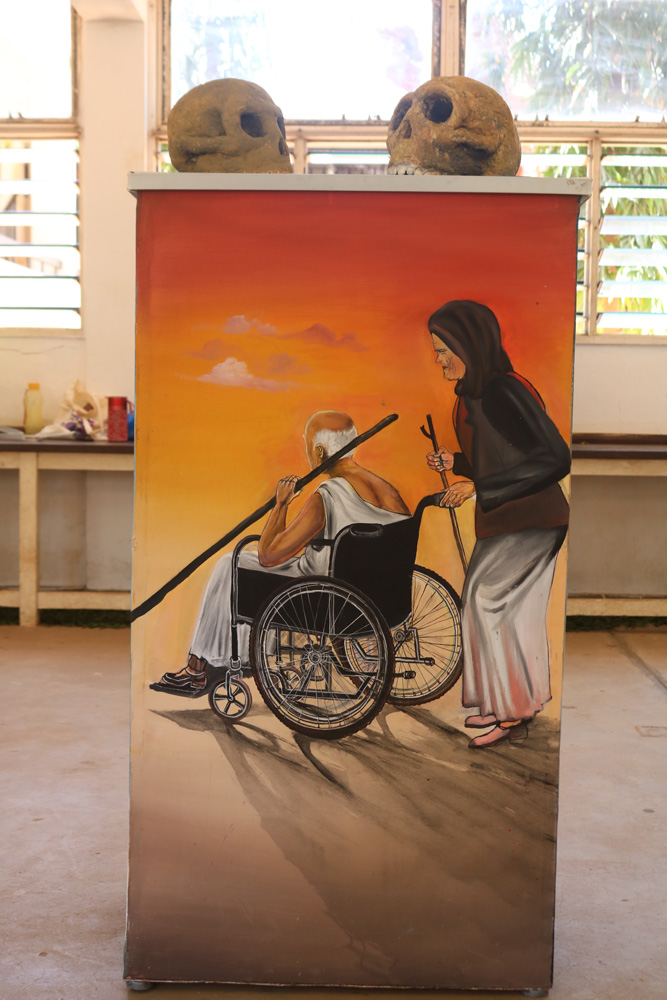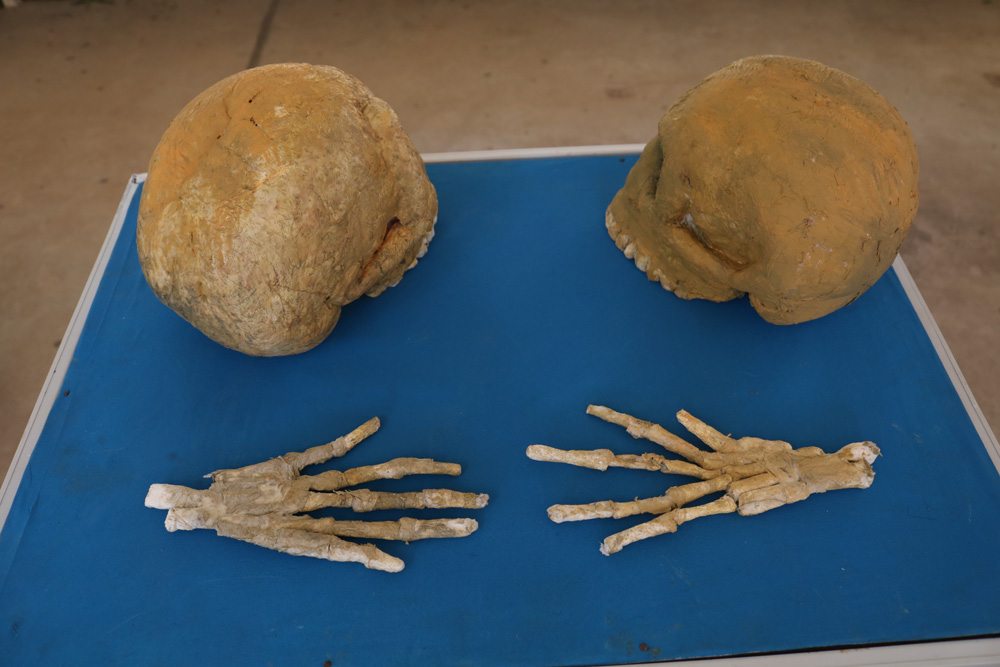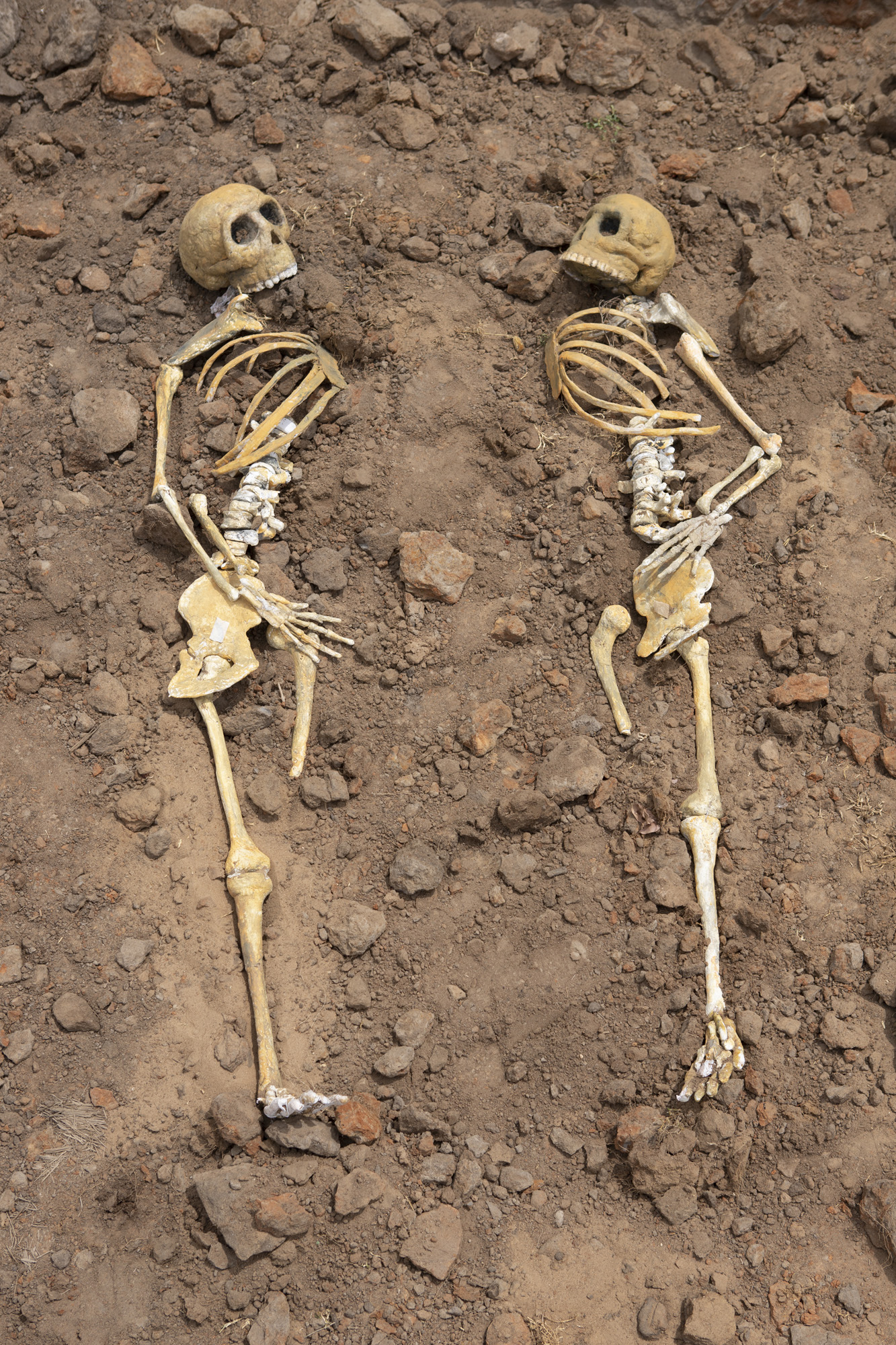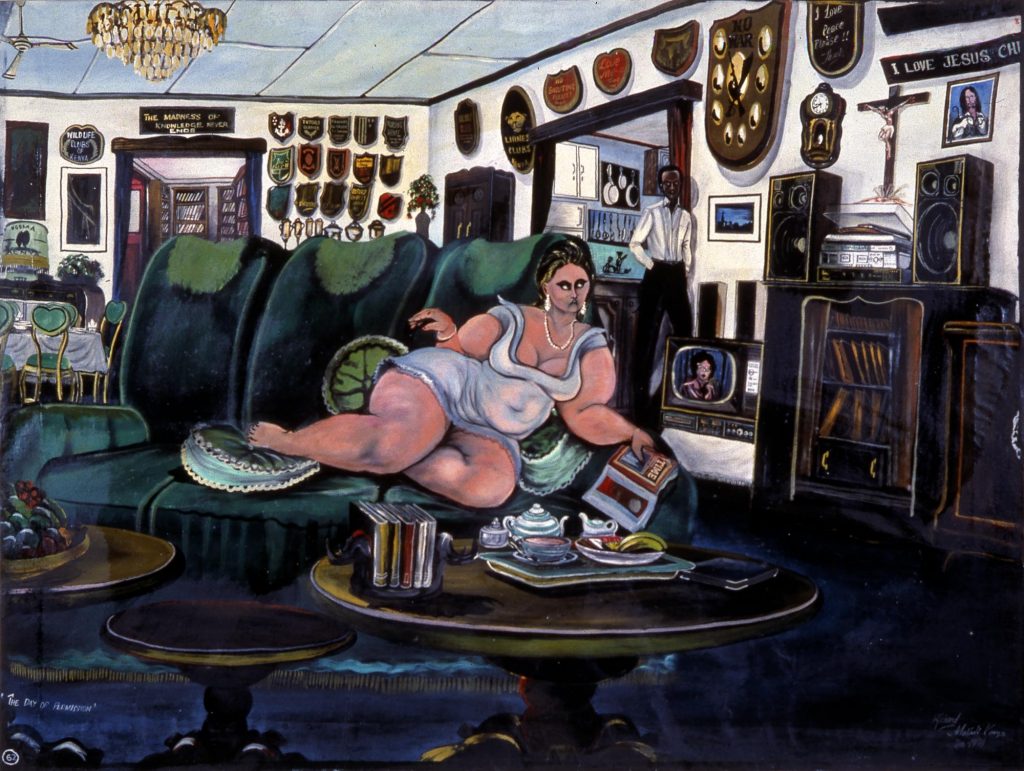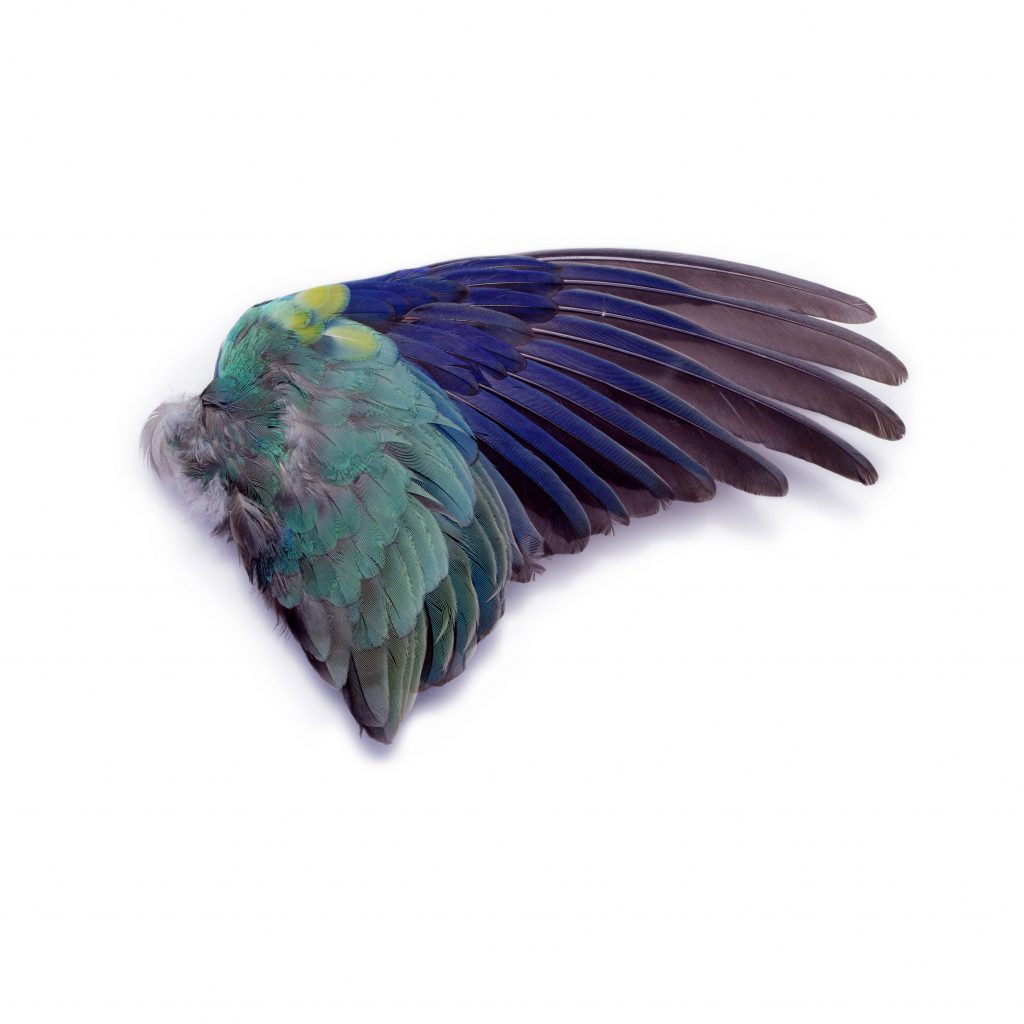Richard Onyango, renowned painter, collector of automobiles, and creator of models, together with Polish painter Zbigniew Rogalski and a group of students worked on creation of installation at Pwani Uniwersity. It is made of pedestals covered with images depicting a life story of a couple along with artificial human skeletons of male and female, made of recycled materials. Eventually the installation was exhibited in Pwani University, and part of it (male and female skeleton) was presented at Seahorse Art Centre, in a form of a fictious archeological dig.
[WP-Coder id=”5″]People: Richard Onyango, Zbigniew Rogalski
Places: Pwani University
Events:
Talk:
Richard Onyango
Born in 1960 in Kisii, Kenya
Lives and works in Malindi, Kenya
For the first thirty years of his life Richard Onyango supported himself through a remarkable range of occupations—sign-painter, bus-driver, woodcarver, carpenter, fashion designer, furniture maker, farmer, animal trainer. He was born in the western highlands of Kenya, near Lake Victoria; while he was still very young his family moved to the developing coastal regions. His father worked for the Tana River Irrigation Scheme, and Onyango became fascinated with the signs of industrial development in the African landscape: trucks, tractors, bulldozers, planes, etc. As a child he recorded such impressions in a series of sketches he called “photo pictures” of “whatever my eye could see.” He has explained further, “To keep things properly in mind I had to draw them since I didn’t have a camera to record what I would like to put in memory.”
These elements are still present in Onyango’s paintings today. He frequently chooses to depict situations that waver between the exaltation of imported technology and its fragility. Accidents, warnings, calls for prudence reveal a world constantly threatened by disaster and the unforeseeable. Like many contemporary African artists, Onyango’s pictorial language is characterized by its great legibility. Rather than evidence of primitivism, this legibility demonstrates the importance Onyango accords to representation as a means of direct communication. The unreal theatricality of his work similarly engages the spectator: the distortion of perspective and form and the moody tonality of the heightened palette dramatize the painting’s relationship with the spectator, who in turn becomes a helpless or complicit participant in the events described.
This psychological tension is notably present in the paintings that Onyango dedicated to his relationship with Drosie. White and curvaceous, the young woman is represented in imaginary or real situations that compress all the fantasies that Africa projects onto the West. Whether depicting the couples’ alternating domination and submission, or the fascination exercised by a life-style synonymous with luxury and wealth, Onyango succeeds in inverting stereotypes and denouncing their inherent violence.
short documentary about Richard Onyango made by CentrumCentrum
Zbigniew Rogalski
Zbigniew Rogalski, malarz, autor projektów multimedialnych, jest absolwentem ASP w Poznaniu. Wystawiał między innymi w Narodowej Galerii Sztuki Zachęta w Warszawie, CSW Zamek Ujazdowski, warszawskiej galerii Raster, Galerii Arsenał w Białymstoku, Muzeum Sztuki w Łodzi, Hamburger Bahnhof w Berlinie, Kestner Gesselschaft w Hanowerze, Kunsthalle Manheim, Zak Branicka Gallery w Berlinie, Almine Rech Gallery w Paryżu, Akinci Gallery w Amsterdamie, Jack Hanley Gallery w San Francisco, Site Santa Fe w Santa Fe, Krasnoye Znamya w Sankt-Petersburgu, National Centre for Contemporary Arts w Moskwie, Museum of Contemporary Art w Bat Yam, Sommer Gallery w Tel Awiwie, Sprüth Magers w Monachium, Lee Gallery w Londynie, Krinzinger Projekte w Wiedniu, The Letterkenny Arts Centre w Letterkenny, Estonian Art Museum w Tallinie.
W 2020 r. uzyskał stopień doktora habilitowanego w zakresie sztuk pięknych na Uniwersytecie Pedagogicznym w Krakowie. Prowadzi pracownię malarstwa na AS w Szczecinie.






